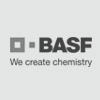- Description
- Specifications
Catalog #: PKA-200
Description:
cAMP-dependent PKA is an ubiquitous serine/threonine protein kinase present in a variety of tissues (e.g. brain, skeletal muscle, heart). The intracellular cAMP level regulates cellular responses by altering the interaction between the catalytic C and regulatory R subunits of PKA. The inactive tetrameric PKA holoenzyme R2C2 is activated when cAMP binds to R2, which dissociates the tetramer to R2 cAMP 4 and two active catalytic subunits. Free Catalytic subunits of PKA can phosphorylate a wide variety of intracellular target proteins. In response to hormone- induced high cAMP levels, PKA phosphorylates glycogen synthetase (inhibition of the enzyme activity) and phosphorylase kinase to block glycogen synthesis. Different isoforms of catalytic and regulatory subunits suggest specific functions. The recombinant PKA catalytic subunit a is a 41kDa protein. The a-isoform is the predominant form with a broad tissue distribution and can be used for in vitro enzymological studies of neural and hormonal signal transduction or to phosphorylate target proteins in vivo including Ion channels, transcriptional activator proteins and regulatory enzymes of glycogen metabolism.
Synonyms:
cAMP-dependent protein kinase alpha-catalytic subunit, EC 2.7.11.11, PKA C-alpha, PKACA, PRKACA, MGC48865, MGC102831.
Source:
Escherichia Coli.
Purity:
Greater than 95% as determined by SDS-PAGE.
Formulation:
PKA catalytic subunit a is supplied in a buffer containing 25mM potassium phosphate (pH 6.5), 5mM 2-mercaptoethanol, 5mM EDTA, 150mM NaCl and 50% glycerol.
Activity:
The specific activity of the recombinant PKA catalytic subunit a, is >15.000.000 U/mg.
Storage:
Store at 4 °C if entire vial will be used within 2-4 weeks.
Store, frozen at -20 °C for longer periods of time.
Avoid multiple freeze-thaw cycles.
Assay Conditions:
Roskoski-AssayProtein kinase activity can be measured using a modified radioactive assay according to Roskoski et al.
The assay will be performed in a mixture containing 50mM MOPS (pH7.0), 10mM MgCI2, 0.25 mg/ml bovine serum albumin, 100 IJM Kemptide (peptide substrate), 100 IJM unlabeled ATP mixed with [y_32p] ATP (500-1000 cpm/pmol) and Ca subunit in a final volume of 50 IJI. Reaction is started by addition of the Ca subunit and can be stopped after 5 minutes incubation at 30 °C by spotting the reaction mix onto WhatmanP-81 filters and soaking the filters four times in 75mM phosphoric acid (10 ml per sample) for at least 5 minutes. After four washing steps rinse filters with ethanol, dry and count.
Roskoski, R., Jr. (1983) Methods Enzymol. 99, 3-6
For the detection of phosphorylation in substrate proteins the phosphotransferase reaction can alternatively be stopped by taking aliquots of the mixture and adding SDS sample buffer. The phosphorylation status of the substrate proteins can subsequently be analysed using SDS PAGE and autoradiography.
Zimmermann, B. (1999) Journal of Biological Chemistry.274, 9, 5370-78.
Unit Definition:
One unit is defined as the amount of recombinant PKA catalytic subunit a, required to incorporate 1pmol of phosphate into the specific substrate peptide kemptide (LRRASlG) in one minute at 30 °C.
Usage:
Denovo Biotechnology's products are furnished for LABORATORY RESEARCH USE ONLY. The product may not be used as drugs, agricultural or pesticidal products, food additives or household chemicals.
















